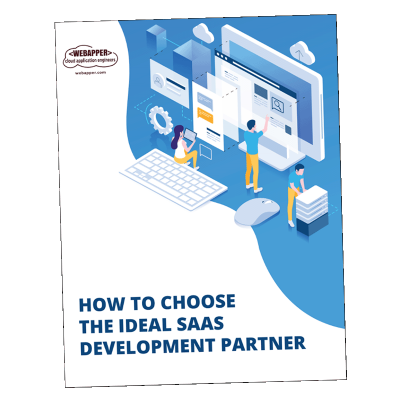The Importance of Сreating a
Great SaaS UI/UX Design
Customer experience is an essential flywheel element for growth in SaaS. The product experience IS the customer experience. Great user experiences drive higher conversions, retention and expansion. A solid UX guides users intuitively, establishes credibility, and builds brand loyalty. Continuous optimization using data and user research can create delightful moments that turn customers into promoters. Unlike features, exceptional UX isn’t easily copied, building competitive advantage. Because UX is critical, we share our insights on creating a great SaaS UI/UX design.
A spectacular user experience is essential for SaaS adoption and retention. Approach UX design holistically across three planes – visual design, information architecture, and interaction design. Great UX requires cross-discipline collaboration. Work closely with engineers and designers to bridge aspirations and technical constraints. Keep UX design aligned to overarching product and business goals. Enable user workflows that drive adoption, retention and expansion.
Visual Design
- Visual design establishes the brand’s look & feel. Use color schemes, typography, spacing, and imagery that align with your brand. Tools like Figma can expedite your development cycles.
- Maintain consistency in UI elements across the product.
- Mobile-first design is a must.
- Keep layouts clean and simple. Focus attention on primary actions through visual hierarchy, contrast, and whitespace. Minimize cognitive load.
- Guide users with clear navigation and visual indicators of current status.
- Use contextual help, inline instructions, and tooltips. Maximize visual cues.
Information architecture (IA)
- Information architecture ensures the right content is presented at the right time. Categorize information clearly into logical, consistent taxonomies.
- Facilitate scanability through concise labeling, formatting, and visual grouping of related elements.
- Manage complexity using progressive disclosure. Avoid overwhelming users. Reveal deeper functionality gradually.
- Optimization should focus on key user journeys and high-value tasks. Remove unnecessary steps that inflate cognitive workload.
- Sending clear signals that guide users to their destination.
Interaction Design
- User-centered design principles win. Know your users by conducting comprehensive research and testing. Build intuitive workflows that help users reach their goals.
- Minimize friction by streamlining the steps users must take to complete tasks. Build using standard UX conventions that experienced SaaS users are accustomed to.
- Deliver an enjoyable experience with subtle animations and transitions. Avoid gratuitous interactions that distract from your core functionality.
- Accelerate workflows with search, keyboard shortcuts, and automation where possible.
- Continuously optimize the UX based on usage data and user feedback. Address confusing elements of workflows.
- Ongoing user testing and research should guide designs. Analytics inform opportunities but qualitative insights illuminate the reasons.
The Importance of Сreating a Great SaaS UI/UX Design
Customer experience is an essential element for growth in SaaS. Smart companies invest in world-class experiences. Great user experiences drive higher conversions, retention, and expansion by removing friction from workflows. They establish credibility, build loyalty, and create delight. Approach UX design holistically across visual design, information architecture, and interaction design, then optimize based on data and user research. In the end, creating a great SaaS UI/UX design engages employees and delights customers. Success comes from constantly optimizing and innovating the product experience.



Leave A Comment